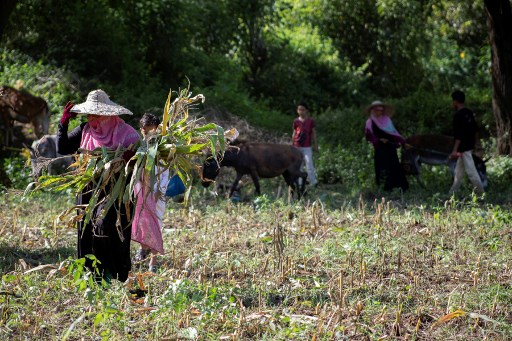
403
Sorry!!
Error! We're sorry, but the page you were looking for doesn't exist.
Tea-Picking Robot Developed to Address Labor Shortage in China's Longjing Tea Industry
(MENAFN) The Longjing tea industry in China's Zhejiang Province is facing a labor shortage, with most of the tea pickers being in their 60s and few young people willing to take up jobs in the industry. However, a tea-picking robot developed by Jia Jiangming, an associate professor from the School of Mechanical Engineering of Zhejiang Sci-Tech University, is providing a solution to this problem. The 550-kg robot picker, with its agile manipulators and caterpillar wheels, can weave through rows of renowned Longjing tea bushes and pick tea leaves with high accuracy.
Longjing tea, also known as West Lake Dragon Well tea, is a variety of green tea that is characterized by its green color, delicate aroma, mellow taste, and beautiful shape. The upcoming Qingming Festival, which is the major harvest period for premium spring tea, has led to a shortage of labor in the local tea gardens. The tea-picking robot is therefore a godsend for local tea planters this season.
According to Jia, the picking work of tea leaves has relied largely on manual labor, making it difficult to be replaced by machinery. However, the development of the tea-picking robot began in 2019, with Jia's team introducing the cognition model of convolutional neural networks in deep learning. This enabled the robot to study many tea tree bud and leaf image data, making it possible to pick tea leaves with high accuracy.
The robot uses binocular stereo vision to position where the target bud and leaf are, cut them off precisely, and then suck the leaves into its basket via its negative-pressure pipette. If cut at the wrong angle, the robot can damage the tea branch or lead to incomplete bud and leaf forms. These damaged tea leaves can not be adopted, only causing unpleasant waste. However, the robot's accuracy of bud and leaf recognition has improved to 86 percent, and its picking efficiency has increased to 1.5 seconds per tea leaf.
Chen Jianneng, another researcher on the team, stated that the new generation robot can do as well as a human tea picker. Although the robot is still in its trial operation, the team plans to improve its practicability, allowing the tea industry to enjoy tangible benefits brought by modern mechanization in the future. The tea-picking robot is an excellent example of how technology can be used to address labor shortages in traditional industries and enable them to keep up with increasing demands.
Longjing tea, also known as West Lake Dragon Well tea, is a variety of green tea that is characterized by its green color, delicate aroma, mellow taste, and beautiful shape. The upcoming Qingming Festival, which is the major harvest period for premium spring tea, has led to a shortage of labor in the local tea gardens. The tea-picking robot is therefore a godsend for local tea planters this season.
According to Jia, the picking work of tea leaves has relied largely on manual labor, making it difficult to be replaced by machinery. However, the development of the tea-picking robot began in 2019, with Jia's team introducing the cognition model of convolutional neural networks in deep learning. This enabled the robot to study many tea tree bud and leaf image data, making it possible to pick tea leaves with high accuracy.
The robot uses binocular stereo vision to position where the target bud and leaf are, cut them off precisely, and then suck the leaves into its basket via its negative-pressure pipette. If cut at the wrong angle, the robot can damage the tea branch or lead to incomplete bud and leaf forms. These damaged tea leaves can not be adopted, only causing unpleasant waste. However, the robot's accuracy of bud and leaf recognition has improved to 86 percent, and its picking efficiency has increased to 1.5 seconds per tea leaf.
Chen Jianneng, another researcher on the team, stated that the new generation robot can do as well as a human tea picker. Although the robot is still in its trial operation, the team plans to improve its practicability, allowing the tea industry to enjoy tangible benefits brought by modern mechanization in the future. The tea-picking robot is an excellent example of how technology can be used to address labor shortages in traditional industries and enable them to keep up with increasing demands.

Legal Disclaimer:
MENAFN provides the
information “as is” without warranty of any kind. We do not accept
any responsibility or liability for the accuracy, content, images,
videos, licenses, completeness, legality, or reliability of the information
contained in this article. If you have any complaints or copyright
issues related to this article, kindly contact the provider above.


















Comments
No comment